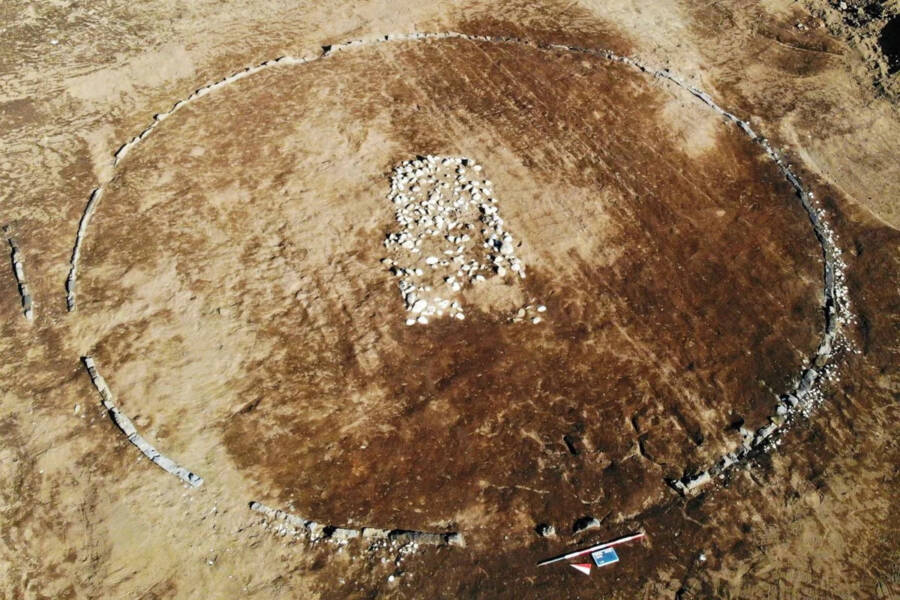The Iron Age site near Amorosi, Italy dates to the 7th or 8th century B.C.E. and features dozens of tombs of high-status individuals from the "Pit Burial Culture."

Caserta and Benevento Superintendency of Archaeology, Fine Arts, and LandscapeThe Iron Age necropolis near Amorosi, Italy.
Archaeologists were recently excavating a site in southern Italy ahead of a construction project when they unearthed the ruins of an Iron Age necropolis.
The site, which is about the size of a city block, holds 88 tombs and valuable grave goods from the “Pit Burial Culture,” a group that inhabited the land near Amorosi, Italy, near the end of the Iron Age.
Now, researchers from the Superintendency of Archaeology, Fine Arts, and Landscape for Caserta and Benevento are testing both the soil and the human remains found within it for more information about these fascinating ancient people.
The Secrets Of The Amorosi Iron Age Necropolis
While excavating a site in Amorosi, Italy, before the construction of a power plant, archaeologists stumbled upon a massive Iron Age necropolis.
Located near southern Italy’s Volturno River, the necropolis featured 88 tombs, grave goods, and pottery dating back 2,700 years to the 7th or 8th century B.C.E.
The tombs contained both male and female remains. The men were buried with weapons, while the women were buried with bronze goods like bracelets, pendants, and other jewelry and ornaments.
“The grave artifacts also included large quantities of vases of different shapes, often stacked on top of each other, usually laid at the feet of the deceased in a reserved space,” the local cultural heritage authority reported, per Reuters.
Archaeologists believe the people buried in the necropolis were high-status individuals given the value of the prestigious objects entombed alongside them.

Caserta and Benevento Superintendency of Archaeology, Fine Arts, and LandscapeMany of the burials contained valuable grave goods.
Additionally, stone circles measuring 50 feet (15 meters) in diameter were discovered enclosing two burial mounds that researchers believe held the remains of elite members of the culture, such as the ruling chieftain.
So, who exactly were these Iron Age inhabitants of Italy?
Iron Age Cultures In Pre-Roman Italy
Many cultures inhabited modern-day Italy during the Iron Age. One of the most influential was the Villanova people, who cremated their dead and buried the urns that housed their ashes. Researchers have been discovering these urns since the mid-19th century.
Other cultures included the Golasecca, who lived in northwestern Italy. Since the 19th century, researchers have found nearly 50 necropolis tombs with ceramics and metal objects from this group. They once traded oil, wine, and ceramics with Etruscans, cultures from the Baltics, and the ancient Greeks.
With this most recent discovery, researchers are excited at the prospect of expanding their knowledge surrounding Italian Iron Age cultures.
“This [recent] archaeological discovery is of decisive importance for the history of our culture,” Amorosi Mayor Carmine Cacchillo told Reuters.
Cacchillo continued, “The discovery of the necropolis… strengthens the intercultural path we have long been pursuing… to promote democratic governance, to strengthen social cohesion and participatory citizenship, developing greater sensitivity and enjoyability of cultural assets.”
After reading about the Iron Age necropolis found in southern Italy, dive into the story of the Grauballe Man, an Iron Age man whose body was preserved for thousands of years in a bog. Then, read about nine of history’s most chilling mummies.





